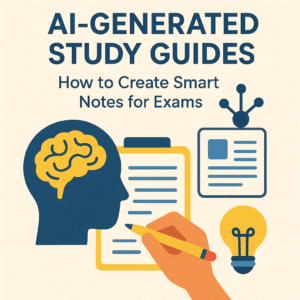A few years ago, digital design meant long brainstorming sessions, dozens of sticky notes, and pixel-by-pixel prototyping that took weeks—sometimes months—to perfect. Fast forward to today, and all it takes is a single text prompt like “design a sleek finance dashboard” for AI to generate a clickable prototype in seconds.
Welcome to the age of AI-powered prototyping, where creativity meets computation and designers move from concept to creation faster than ever. This shift isn’t just about efficiency; it’s about redefining how ideas come to life.
At TechLooker, we’ve seen firsthand how integrating AI into the design workflow allows teams to focus on innovation instead of repetition, turning bold ideas into interactive realities in record time.
1. The Evolution: From Manual Craft to Intelligent Creation
Traditionally, creating a digital product involved multiple stages—brainstorming, wireframing, visual design, and interactive prototyping. Each phase was manual, and every update demanded multiple revisions.
But AI has rewritten that story. Tools like Uizard, Figma AI, Framer, and Galileo AI now generate wireframes, layouts, and even color palettes directly from natural language prompts. Instead of spending hours designing each screen, a designer can guide the AI with intent—and see the visual structure emerge instantly.
The best part? AI doesn’t just copy templates; it learns from design patterns, accessibility standards, and even brand tone. For companies like TechLooker, that means building smarter design systems that stay on-brand, responsive, and data-driven.
2. The Power of AI in Every Stage of Design
AI has entered every phase of the creative process—and it’s doing much more than automating tasks. It’s enhancing decision-making. Here’s how:
a. Ideation & Concept Development
AI tools can generate design concepts based on user goals, mood boards, or even voice commands. Imagine describing your idea—“a modern landing page for a digital agency with soft gradients and minimal typography”—and receiving several design options in minutes.
b. Layout & Composition
AI algorithms analyze millions of design layouts to understand balance, hierarchy, and user flow. They can recommend optimal placements for buttons, forms, and calls-to-action that improve usability and conversions.
c. Interactive Prototyping
AI-powered tools now turn static designs into dynamic prototypes automatically. Designers can instantly preview animations, transitions, and screen flows, reducing development bottlenecks.
d. Testing & Optimization
AI doesn’t stop at creation—it evaluates. Predictive UX tools simulate user interactions and detect potential friction points before real testing begins. This means fewer revisions, faster delivery, and better user satisfaction.
At TechLooker, we leverage these capabilities to deliver websites and applications that are not only beautiful but built with data-backed precision and performance in mind.
3. Why Human Creativity Still Leads the Way
Despite all its brilliance, AI lacks something essential: empathy.
Design isn’t just about visuals—it’s about understanding human emotions, cultural context, and the subtle cues that make users feel seen.
Aesthetics can be automated, but emotion cannot. That’s where human designers shine.
At TechLooker, our creative team blends AI efficiency with human storytelling, ensuring every interface communicates personality and purpose.
Think of AI as a creative co-pilot—it handles the technical lift, while humans craft the narrative and emotion behind every pixel.
4. From Sketch to Screen in Minutes
One of the most revolutionary aspects of AI-powered prototyping is how quickly ideas move from imagination to interaction.
A designer can sketch a rough idea on paper or describe a concept to an AI assistant. Within moments, the AI generates multiple design options, complete with user flows and color schemes. Designers can then refine, personalize, and test these prototypes instantly.
This lightning-fast workflow allows businesses to experiment more freely, collaborate more efficiently, and launch products faster.
At TechLooker, this process forms the backbone of our UI/UX design strategy, helping startups and enterprises visualize ideas before committing to full development.
This not only saves time and cost—it enables creative exploration without boundaries.
5. The Collaborative Future of Design
AI isn’t replacing designers; it’s redefining teamwork.
In traditional workflows, designers, developers, and product managers often worked in silos. Now, AI bridges those gaps.
For example:
- AI-driven tools like Figma’s “Dev Mode” automatically convert prototypes into ready-to-use code snippets.
- Collaboration platforms powered by AI predict design conflicts and recommend resolutions before they happen.
- Real-time feedback systems use AI to summarize stakeholder comments and identify recurring themes.
For agencies like TechLooker, this means smoother collaboration, fewer communication breakdowns, and faster project delivery—all while maintaining design integrity.
6. The Challenges and Ethical Considerations
Like every powerful technology, AI design tools come with challenges. Overreliance can lead to generic or over-optimized designs lacking uniqueness. There’s also a growing conversation around data ethics, intellectual property, and bias in AI-generated visuals.
Responsible design means ensuring that automation supports creativity—not replaces it.
At TechLooker, we take a human-centered approach: using AI to accelerate the process but ensuring every output aligns with brand personality, inclusivity, and ethical standards.
7. The Road Ahead: Designing with Intelligence
The next phase of AI-powered prototyping will be even more immersive. We’re already seeing tools that:
- Predict design trends before they emerge
- Personalize interfaces dynamically based on real-time user emotions
- Integrate seamlessly with AR/VR environments for multi-dimensional experiences
In the near future, designers won’t just create screens—they’ll design adaptive ecosystems that evolve with users.
At TechLooker, we believe the future of design is not about faster tools—it’s about smarter creativity. As AI becomes more intuitive, the line between imagination and execution will blur completely.
Conclusion: Where Imagination Meets Intelligence
AI-powered prototyping marks a new chapter in digital creativity. It accelerates workflows, enhances precision, and unlocks levels of experimentation that were once impossible. But it’s still human imagination that gives meaning to pixels and purpose to products.
For designers, the message is clear: embrace AI as a partner, not a replacement.
For businesses, it means faster turnarounds, smarter design decisions, and user experiences that truly connect.
At TechLooker, we merge human insight with artificial intelligence to craft intuitive, high-performing digital experiences—transforming simple ideas into powerful interfaces that define the future of design.
Because from idea to interface, the future belongs to those who design with both heart and intelligence.


